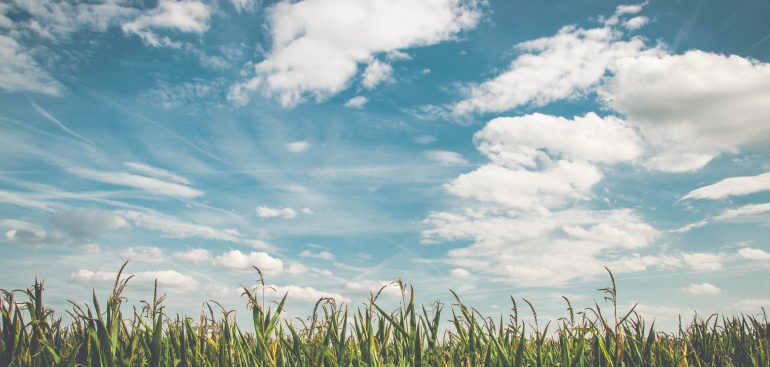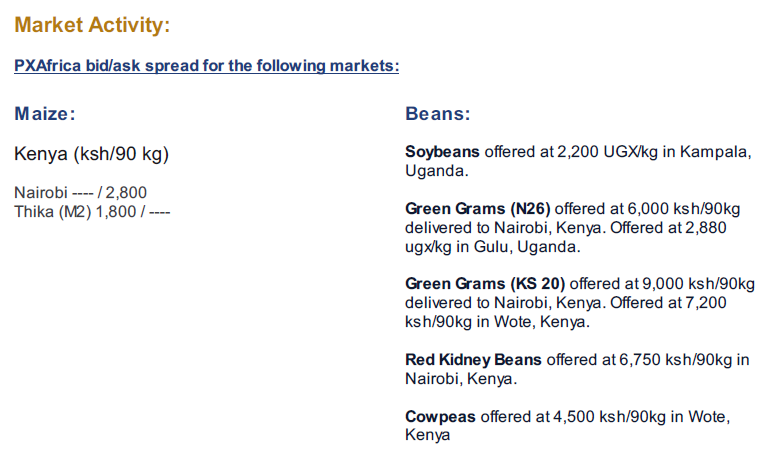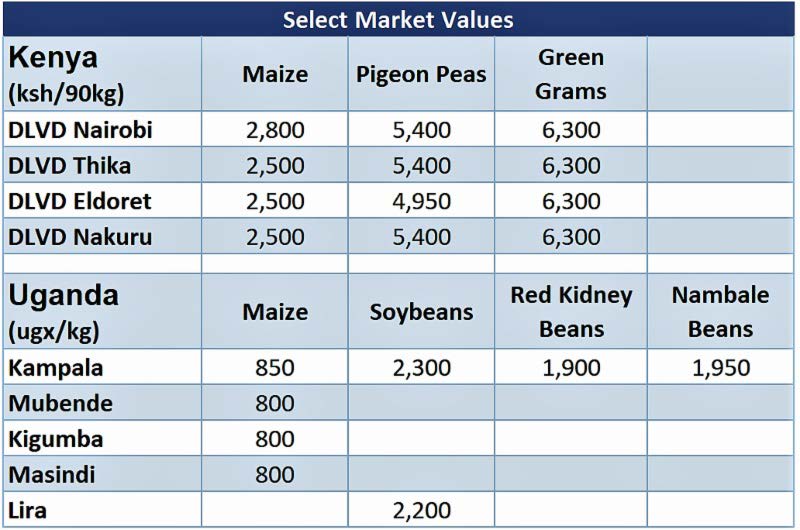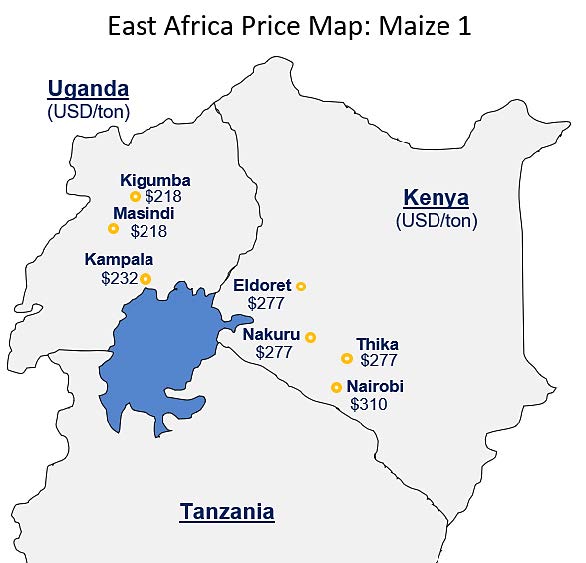Africa News
Market Update 02-20-19
Kenya:
The NCPB opened its depots on January 23 in 14 counties to receive maize from vetted farmers only. The government has so far purchased 62,000 50kg bags of maize valued at Ksh 86.1 million. Agriculture Cabinet Secretary Mwangi Kiunjuri said farmers who have been vetted and supplied maize will start receiving payment by the middle of next week. The counties include Uasin Gishu, Trans Nzoia, Elgeyo Marakwet, Bungoma, Nandi, Laikipia, West Pokot, Kakamega, Nakuru, Narok, Kericho, Baringo, Nyandarua and Migori.
Maize prices increased slightly over the past week as NCPB buying continued. Bids on the ex-board market are still low with expectations that traders not able to sell at the board will need to sell on the open market. Significant amounts of pulses are available in Kenya and Uganda. Please log in to view and contact PXAfrica for additional info if a counterpart is restricted.
Farmers in Eldoret under the North Rift Farmers Union have signed an MOU with a private firm to supply DAP fertilizer at Ksh 3,000/50kg, following the government’s decision not to import subsidized fertilizer this year. Export Trading Group Inputs Kenya Ltd (ETG) will also buy maize from the farmers at a Ksh 1,900 /90kg. This is Ksh 600 less than the Ksh 2,500 offered at the NCPB.
Uganda:
Maize is currently trading between UGX 800 and 900/kg in the Greater Kampala area as most of the crop has entered the market and the price is steadily rising. The price is set to continue rising and a handful of Kampala sellers have started stocking to prepare for the demand from Kenya in the next two months.
Soybeans continue to be in high demand in the region and are currently trading at UGX 2,200/kg in the Lira area and UGX 2,300/kg in Kampala. Sellers understand the demand will remain as the next crop in June will be the next available period in which the price will reach levels below UGX 2,000/kg.
Beans are still available in the Kampala area and still trading between UGX 1,900/kg and UGX 1,950.
South Africa:
South Africa’s major growing areas received a steady amount of rain over the past few weeks, alleviating fears of the country becoming a major global importer of white maize, raising regional prices in tandem. After an anomalous dry start to the crop year forcing farmers to delay corn planting due to low soil moisture, the welcome rains eased fears of a potential food crisis in the southern and eastern Africa regions.
South Africa is also anomalous in Africa with regard to the extent of GMO products planted. USDA Foreign Agricultural Service estimates that total maize, soybean, and cotton planting amounts to around 2.4 million hectares, accounting for around 94% of the maize plantings, 95% of the soybeans, and all of the cotton.





